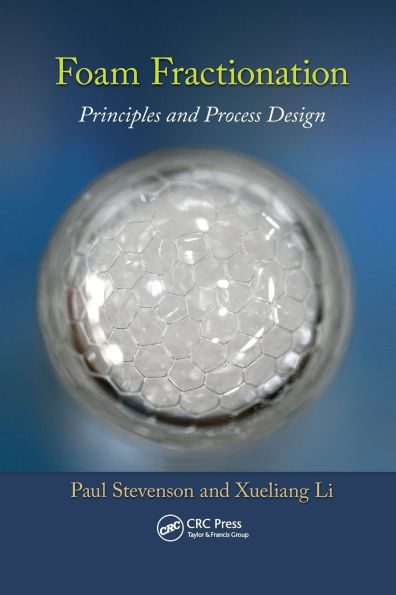To assist in the widespread adoption of this highly affordable yet powerful process, Foam Fractionation: Principles and Process Design:
- Provides a systematic explanation of the underlying physics of foam fractionation
- Discusses the fundamentals of molecular adsorption to gas liquid interfaces and the dynamics of foam
- Describes foam fractionation process intensification strategies
- Supplies design guidance for plant-scale installations
- Contains the latest knowledge of foam fractionation transport processes
- Presents a case study of the world’s largest commercial foam fractionation plant producing the food preservative Nisin
Foam Fractionation: Principles and Process Design capitalizes on the authors’ extensive practical experience of foam fractionation and allied processes to give process engineers, industrial designers, chemical engineers, academics, and graduate students alike a greater understanding of the mechanistic basis and real-world applications of foam fractionation.
To assist in the widespread adoption of this highly affordable yet powerful process, Foam Fractionation: Principles and Process Design:
- Provides a systematic explanation of the underlying physics of foam fractionation
- Discusses the fundamentals of molecular adsorption to gas liquid interfaces and the dynamics of foam
- Describes foam fractionation process intensification strategies
- Supplies design guidance for plant-scale installations
- Contains the latest knowledge of foam fractionation transport processes
- Presents a case study of the world’s largest commercial foam fractionation plant producing the food preservative Nisin
Foam Fractionation: Principles and Process Design capitalizes on the authors’ extensive practical experience of foam fractionation and allied processes to give process engineers, industrial designers, chemical engineers, academics, and graduate students alike a greater understanding of the mechanistic basis and real-world applications of foam fractionation.

Foam Fractionation: Principles and Process Design
206
Foam Fractionation: Principles and Process Design
206Paperback(Reprint)
Related collections and offers

Product Details
| ISBN-13: | 9781138074286 |
|---|---|
| Publisher: | Taylor & Francis |
| Publication date: | 11/22/2017 |
| Edition description: | Reprint |
| Pages: | 206 |
| Product dimensions: | 6.12(w) x 9.19(h) x (d) |
